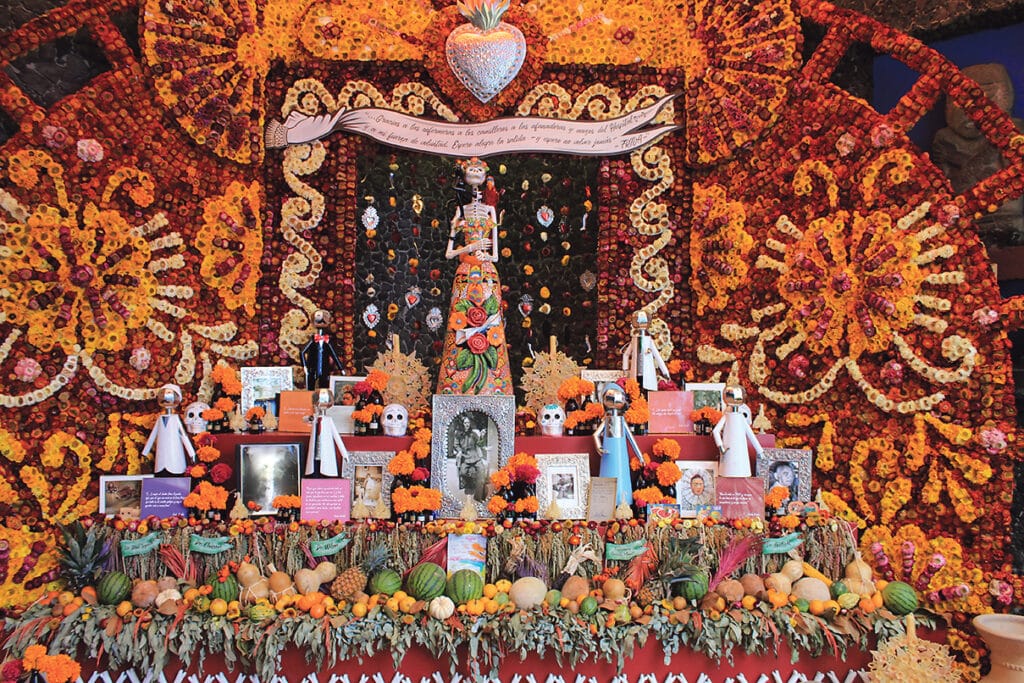
Even though we associate November with Halloween and the many fun and games associated with this festival of the dead, I felt the humble potato deserved a mention this month. As we have had such fine weather, there are very few potatoes still in the ground and most, if not all, are carefully stashed away for the long winter months. Storing potatoes is not such a task today, as we are so used to having them available in the shops 24/7.
We accept the potato as part of the staple diet of the Irish people, but it has also become synonymous with Ireland because of its association with the potato famine of the 1840s. The dependence of the Irish people on the potato as their main food developed due to its nutritious value and its ability to produce large crop on a small amount of land.
The potato possesses many nutrients, as it is a rich source of antioxidants, vitamin C, B1, B2, B6, B9 and numbers of trace elements. These are all needed in our diet and play a functional role in maintaining our bodies. The skin of the potato also contains phenolic acids. Both antioxidants and phenolic compounds have ability to suppress cancer cells and improve heart health by lowering the risk of hypertension.
Potatoes also contribute to:
1. Maintaining bone structure and strength, as they contain iron, calcium, magnesium, and zinc. Both Iron and zinc help in the production and maturation of collagen. Bones are made primarily of collagen, so when a body’s collagen production decreases, your bones weaken, making them more susceptible to fracture.
2. Potatoes help control blood pressure. Potassium, calcium, and magnesium are all present in the potato. These have been shown to decrease blood pressure naturally. Potassium widens blood vessels thus reducing the pressure on the vessel walls.
3. Potatoes and the heart. There are significant amounts of fibre in a potato and fibre helps in lowering cholesterol. The potassium present in potatoes also helps maintain a healthy heart.
4. Inflammation. Learning, memory, and the movement of muscles all benefit from choline, which is present in potatoes. One large potato contains 57mg of this nutrient. The daily requirement is 550 mg for men and 425 for women. Choline also a) Maintains cellular membrane integrity; b) Helps in the transmission of nerve impulses; c) Helps in fat absorption; d) Contributes to early brain development.
5. Cancer There are a number of reasons why potatoes are helpful in preventing cancer.
a) Firstly, they contain folate and folate, due its role in DNA synthesis and DNA repair prevents DNA mutations forming.
b) Secondly, fibre intake (present in potatoes) is associated with a lower risk of colorectal cancers.
c) Free radical damage to cells is reduced by the presence of vitamin C and quercetin in potatoes.
6. Gut health is maintained due to potatoes containing fibre, thus preventing constipation, and ensuring regular bowel movements.
7. Potatoes contain few calories. One baked potato (without butter) contains 164 calories approximately. They thus prevent one from snacking as they make a person feel full for longer. In this way they help towards maintaining a healthy weight by not eating excess calories.
8. Vitamin B6. The presence of Vitamin B6 in potatoes is important for the breaking down of carbohydrates and proteins into smaller compounds. These are then more easily utilised for the energy requirements of the body. One potato contributes 30% per cent of our daily B6 requirements
9. Skin. Collagen is important for skin. The vitamin C in potatoes and other antioxidants in potatoes helps to maintains the overall skin texture.
The bottom line is that potatoes are a superb food and are well worth the effort of cooking them, especially as there are so many ways of cooking them, as well as so many different varieties to choose from.
Try buying unwashed potatoes, as washing removes the protective coating present in the skins. They are best stored in the dark, as light can cause them to turn green and this is toxic. The storage area also needs to be dry. Do not store in a fridge as an unpleasant flavour can develop. Do not store near onions, as both vegetables emit natural gases that cause the other to decay.
Even though we are used to peeling potatoes, this is not a good idea, as the vitamin, mineral and fibre content is mainly in the skin.
The green discolouration on potatoes may contain solanine, which can cause issues such as diarrhoea, headaches, and muscle cramps. So, if a potato has shrunken and looks green when peeled, do not use.
Cook at a temperature below 120º C. Above this temperature, potatoes produce a chemical called acrylamide. It has been linked to the development of several cancers, as it has neurotoxic properties.
Too many potatoes should not be eaten if a person is taking beta blockers, as this medication increases potassium in the blood. This, plus the potassium in potatoes (or in bananas and tomatoes) could lead to the problem of having too much potassium. This is generally not a problem as most people do not eat the skins and this removes some of the nutrients. For example, a medium (5.3 oz) potato with the skin contains 620mg of potassium and 27mg of vitamin C. Removing the skin eliminates approximately 150mg of potassium and 4.5mg of vitamin C.
Non-starchy vegetables should be eaten with potatoes, as this prevents the intake of too many carbohydrates.



